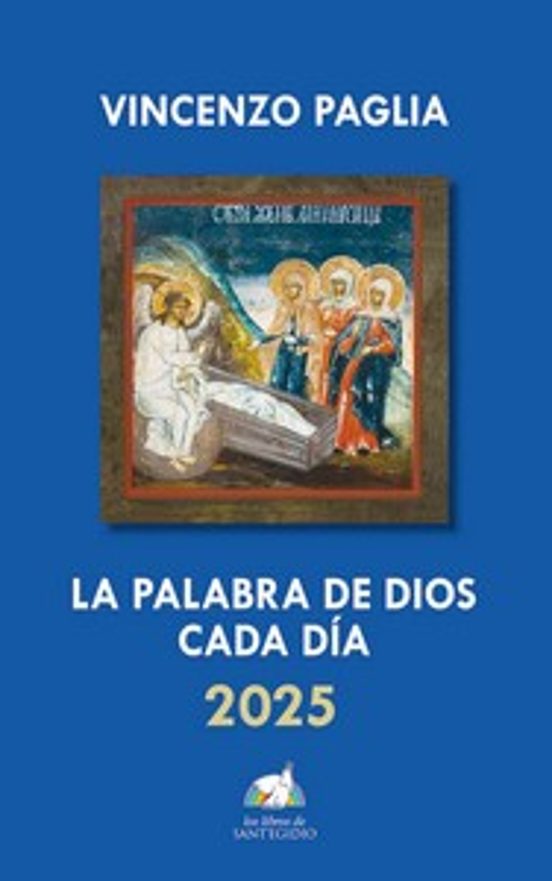At the outset of his essay “On Pain,” the philosopher Ernst Junger offers a passage from a 19th-century German cookbook: “Of all animals that serve as nourishment to man,” it reads, “lobster must suffer the most torturous death, for it is set in cold water on a hot flame.” Whether or not lobsters suffer — a crustaceous quandary that once left David Foster Wallace ambivalent, even after devouring the scientific literature — it is difficult to see their wriggling as a sign of jubilation. But all too rarely does the fact of their death grab our attention. Rather, it is the spectacle of pain amid the roiling water that sears itself into our minds.
Critics of botched executions fixate on the aesthetics of suffering: flailing limbs, heaving chests and foaming mouths.
In the stream of reports and editorials responding to four botched executions in the United States in 2014, and now an upcoming Supreme Court case that will address the constitutionality of Oklahoma’s three-drug lethal injection cocktail, the primary targets of outrage have been the pain experienced by the condemned and the method of execution. In July, the execution of Joseph Wood III in Arizona spanned one hour and 57 minutes. During the process, according to reports, he “gasped” more than 600 times. Just three months before in Oklahoma, Clayton D. Lockett reportedly writhed and screamed during his 43-minute-long execution. And in January 2014, there were Dennis McGuire in Ohio and Michael Wilson in Oklahoma. Before falling unconscious, Wilson’s last words were: “I feel my whole body burning.”
In the wake of these executions, critics set their sights on the “barbarism” and “inhumanity” of the punishments by citing the extraordinary minute counts from injection to time of death, and the aesthetics of suffering: flailing limbs, heaving chests and foaming mouths. Inside and outside courts, a number of officials called for the improvement of chemical compounds (challenging the “three-drug protocol”), while others demanded a return to the gallows or more “foolproof” methods such as the firing squad.
In spite of harrowing witness accounts from these executions, the responses of lawmakers and the media should attract our concern. As this Times editorial points out, the fixation on the technologies of execution and the appearance of pain often obscures the crucial debate over the abolition of capital punishment.
In 1972, for instance, the Supreme Court’s decision in Furman v. Georgia skirted the issue of abolishing the death penalty by focusing on the cruelty of the method of execution and the seemingly arbitrary imposition of the death sentence across cases. With a 5-to-4 decision and no controlling opinion, the justices ruled that an execution would violate the Eighth and Fourteenth Amendments. Instead of debating the very principle of the death penalty itself, the justices kicked the can down the road, and capital punishment returned in full force with Gregg v. Georgia (1976) after only a de facto four-year moratorium.
And today, still skating around the issue, the Court has decided to take up a case concerning Oklahoma’s three-chemical lethal injection procedure to adjudicate on whether specific drugs, not capital punishment itself, violate the Eighth Amendment. Justice Sonia Sotomayor remarked, “We should review such findings with added care when what is at issue is the risk of the needless infliction of severe pain.” Yet again, the pain inflicted, and not the principle of capital punishment, has gripped lawmakers.
II.
Since the late 19th century in the United States, critical responses to the spectacle of pain in executions have continued to spur ardent calls for the improvement of killing technology. One of the most prolific legal theorists of capital punishment, Austin Sarat, has concisely referred to this history: “The movement from hanging to electrocution, from electrocution to the gas chamber, from gas to lethal injection, reads like someone’s version of the triumph of progress, with each new technique enthusiastically embraced as the latest and best way to kill without imposing pain.” Recent debates over the administration of midazolam and pentobarbital, and in what dosage, seamlessly integrate themselves into Sarat’s grim progress narrative.
The inexhaustible impulse to seek out less painful killing technologies puts a series of questions in sharp relief: What is, and should be, the role of pain in retributive justice? And how has the law come to rationalize the condemned’s experience of pain during an execution? While the Eighth Amendment stipulates the necessity of avoiding “cruel and unusual punishment,” in 1890 the Supreme Court decided this clause could mean that no method of execution should impose “something more than the mere extinguishment of life.” And then, in 1958, the court also determined that the amendment should reflect the “evolving standards of decency that mark the progress of a maturing society.”
If we were to consider the “standard of decency” in our society today, we would be pushed to ask: By what moral order have we continued to establish the “extinguishment of life” as something “mere,” and the pain of the condemned as excessive? In other words, how has the pain experienced during an execution become considered cruel and unconstitutional but not the very act of killing itself? We should dial back to older histories of law to tap into pain’s perennially vexed role in retributive theories of justice.
Tracing the very origins of the legal subject in “On the Genealogy of Morals” (1887), Nietzsche writes about a most powerful idea, only the vestiges of which lingered in 19th-century German jurisprudence: “the idea that every injury has its equivalent which can be paid in compensation, if only through the pain of the person who injures.” According to Nietzsche, the genesis of this “equivalence between injury and pain” can be found in Roman commercial law, in the “contractual relationship between creditorand debtor.” The relationship between crime and punishment, more broadly, can then be understood as an injury or a wrong in the eyes of the law that generates a debt, repayable only through punishment.
Nietzsche’s gripe is with the law’s attempt to draw an economic equivalence between two incommensurable concepts: the injury of the victim and the pain of the punished. The problem is that for the debt to be settled, the injury and the pain of punishment would each have to be somehow calculable — otherwise, they could not be made equivalent.
When accounting for pain in any system of crime and punishment, the challenge is not only the impossibility of calculating it with an objective metric, but also pain’s “unsharability” and “resistance to language,” as the philosopher Elaine Scarry has argued. Beyond the subject experiencing pain, who struggles to account for the sensation — resorting to a handful of adjectives that describe intensities (severe, sharp, mild, burning, searing, crushing and so forth) or to analogies (painful as…) — there is also the witness, who is called upon to interpret the pain of another, as if transmuting the body into a text to be read. In the case of the death penalty, the condemned experiences pain that survives only in the language of the witness.
Lawmakers, despite the often inscrutable nature of pain and the difficulty of representing it through language, still carry the power to adjudicate on how much of it is enough. When botched executions prompt courts to probe the limits of the “cruel” and “unusual,” as they often do, the tacit question is: How much or how little pain is sufficient for the “debt,” as Nietzsche frames it, to be repaid and justice to be served? In the upcoming Supreme Court case, for example, where the “needless” infliction of pain is the concern, precisely how much pain is needed?
After each of the four botched executions in 2014, some critics claimed that the pain of the condemned was simply too great, drawn out and unjustified, whereas others attested that no amount of pain could be enough, that the convicted “deserves” to suffer in the name of justice.
Modern criminal law, however, aims for the high road. Our 21st-century legal system has mostly parted with that archaic notion of “an eye for an eye” so fundamental to the origins of retributive justice. Kant, though he listed a few exceptions, belonged to this camp, proclaiming, “Whoever has committed murder must die.” Today, even though the punishment is still supposed to fit the crime, contemporary criminal laws in America tend toward more discreet economies of pain, relying on prison sentences and painless deaths; punishment now is no longer simply about matching pain to injury. Even when a state sentences convicted murderers to death — a life for a life, if you will — the intended painlessness makes the killing more palatable, seemingly procedural and distinct from revenge.
Many legal scholars and philosophers see this turn toward supposedly less cruel and painful deaths as a result of the gradual bureaucratization of executions. Before the 20th century in Europe and the United States, as the philosopher Michel Foucault showed in his celebrated 1975 book “Discipline and Punish,” executions were not only public spectacles but events in which the state would reconstitute its sovereignty. By publicly “beating down upon” and “mastering” the body of the criminal, the state would aim to inspire lasting obedience in the citizens who observed.
Gradually, though, states have sought to distance themselves from the brutality of the very crimes they condemn. Aiming for retribution and not vengeance (the former considered morally right), the law now compels the state to kill “softly,” “gently” and “quietly,” as Sarat has noted. This movement toward a quiet and medicalized death serves to dispel sympathy for the condemned: The state’s killing seems more civilized than barbaric and, in comparison to the condemned’s crime, appears even gracious.
III.
To better pre-empt instances of pain inflicted by the state, we would not only have to abolish the death penalty but also to reckon with the conditions by which it continues to exist. The problem is that abolitionism sets it sights too narrowly. According to the philosopher Jacques Derrida, what makes the abolitionist discourse “so fragile” is that it “banishes the death penalty at home and maintains the right to kill at war.” To interdict one kind of execution and to legally sanction another reveals that abolitionism is often concerned not with killing itself but rather a locale and a technique.
The logic that allows for railing against certain technologies of killing or how much pain they produce has repercussions for state-sanctioned violence abroad. One could argue that this was the case with President Obama’s “red line” (consistent with the international community’s 1997 Chemical Weapons Convention), which pronounced the use of certain weaponry, not killing itself, as the breaking point for intervention in Syria. And, subsequently, it was the gruesome method and spectacle of the decapitations by the Islamic State, or ISIS, that seems to have justified an expanded air campaign over Iraq and Syria.
While these grisly scenes can evoke our most impassioned responses, they present a wound to be superficially sutured: disturbing problems and pains to be rooted out, often with violence, only when they are seen and heard.
To attend to pain in a more systemic way, we would have to imagine a more ambitious moral call. Emmanuel Levinas, a 20th-century French Jewish philosopher, once wrote that “the justification of the neighbor’s pain is surely the source of all suffering.” Levinas’s conceit suggests that by justifying the pain of others during an execution or even at war abroad, whether criminals or foreigners, we risk perpetuating conditions that afford more extensive kinds of violence, more enduring kinds of pain.
We should continue to challenge the beliefs that lead us to consider a painful execution as excessively cruel or unusual, and a painless death as justified, or worse, compassionate.
Zachary Fine is a writer and a student at the New York University Gallatin School for Individualized Study.









